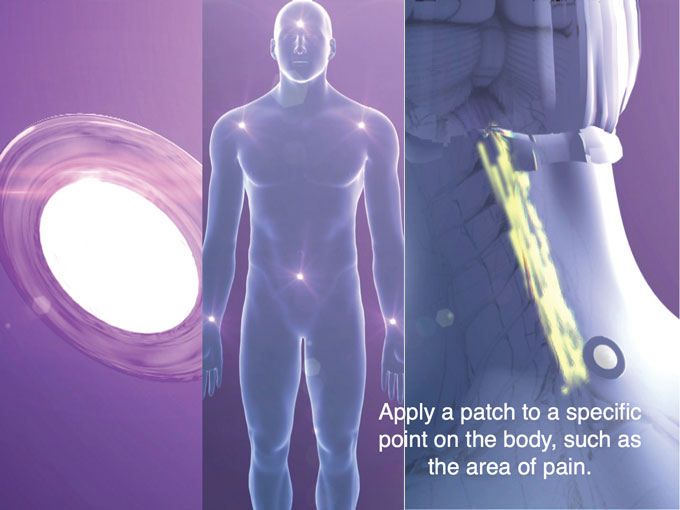Have you ever wondered about the fascinating power of infrared light therapy? In this article, we will explore the science behind this remarkable treatment, which not only promotes cellular healing but also offers a multitude of additional benefits. So, prepare to be amazed as we delve into the world of infrared light therapy and discover how it can positively impact your overall well-being. Get ready to unlock the secrets behind this incredible technology and learn how it can transform your life.
What is Infrared Light Therapy?
Definition and background
Infrared light therapy, also known as photobiomodulation therapy, is a non-invasive treatment that uses infrared light to stimulate healing within the body. This therapy has been used for various purposes, including pain relief, inflammation reduction, and tissue repair. It works by delivering specific wavelengths of light to the body’s tissues, which then produce various biological effects. Infrared light therapy is safe, convenient, and can be easily administered in professional settings or at home.
How it works
Infrared light therapy works by penetrating deep into the body’s tissues and stimulating cellular activity. When infrared light is absorbed by the body’s cells, it stimulates the production of adenosine triphosphate (ATP), which is the energy source for cellular processes. This increased ATP production helps to accelerate the healing process and improve the overall functioning of cells. In addition, infrared light therapy also triggers the release of nitric oxide, a molecule that plays a critical role in vasodilation and improved blood circulation.
Different types of infrared light therapy
There are several different types of infrared light therapy, each utilizing different wavelengths of light. Near-infrared therapy uses wavelengths between 700 and 1200 nm and is commonly used for tissue repair and wound healing. Mid-infrared therapy utilizes wavelengths between 1200 and 3000 nm and is effective in reducing pain and inflammation. Far-infrared therapy, on the other hand, uses wavelengths between 3000 and 10000 nm and is often used for relaxation and detoxification purposes. These different types of infrared light therapy offer various benefits and can be tailored to specific treatment goals.
The Cellular Healing Process
Overview of cellular healing
Cellular healing refers to the process by which damaged cells within the body regenerate and repair themselves. When cells are exposed to infrared light therapy, their energy production increases, which enables them to perform their functions more efficiently. This increased cellular activity aids in repairing damaged tissues and promoting overall wellness in the body.
Role of infrared light therapy in cellular healing
Infrared light therapy plays a vital role in cellular healing by stimulating the mitochondria, the powerhouse of cells, to produce more ATP. ATP is required for various cellular activities, including DNA repair, protein synthesis, and cell division. By increasing ATP production, infrared light therapy enhances the cellular healing process, allowing for faster tissue repair and improved overall health.
Mechanisms of action
Infrared light therapy’s mechanisms of action involve the interaction of light with chromophores, light-sensitive molecules within the cells. When cells absorb infrared light, it activates the chromophores and triggers a series of biochemical reactions. These reactions lead to increased cellular activity, enhanced circulation, reduced inflammation, and improved tissue repair. The specific mechanisms vary depending on the type of infrared light therapy used and the targeted area of treatment.
Benefits of Infrared Light Therapy
Pain relief and inflammation reduction
Infrared light therapy has been widely recognized for its ability to alleviate pain and reduce inflammation. The therapy works by stimulating the release of endorphins, which are natural painkillers produced by the body. Additionally, infrared light therapy helps to suppress pro-inflammatory cytokines, reducing the inflammatory response and providing relief from chronic pain conditions such as arthritis, fibromyalgia, and back pain.
Improved circulation and tissue repair
By enhancing blood circulation, infrared light therapy promotes the delivery of oxygen and nutrients to the body’s tissues. This increased circulation helps accelerate the healing process and aids in the repair of damaged tissues. In addition, infrared light therapy stimulates the production of collagen, a protein essential for wound healing and tissue regeneration. It also helps to break down scar tissue, further assisting in the repair and recovery of injured areas.
Enhanced immune system function
Infrared light therapy has been shown to stimulate immune system function by increasing the production of white blood cells and enhancing their activity. This immune-boosting effect helps the body fight off infections, reduce the risk of illness, and maintain overall wellness. By strengthening the immune system, infrared light therapy can be beneficial for individuals with autoimmune disorders or those looking to enhance their immune response.
Stress reduction and relaxation
Infrared light therapy can provide a calming and relaxing effect on both the body and mind. The therapy activates the parasympathetic nervous system, which is responsible for promoting relaxation and reducing stress. The release of endorphins during the therapy also contributes to a sense of well-being and improved mood. Infrared light therapy can be an effective stress management tool and can complement other relaxation techniques such as meditation and deep breathing exercises.
Skin rejuvenation and wound healing
One of the notable benefits of infrared light therapy is its ability to improve skin health and promote wound healing. By stimulating collagen production and increasing blood circulation to the skin, infrared light therapy helps reduce the appearance of wrinkles, fine lines, and age spots. It can also aid in the healing of wounds, burns, and ulcers by accelerating tissue regeneration and collagen synthesis. Infrared light therapy is a non-invasive and painless alternative to traditional skin rejuvenation treatments.
Application Areas of Infrared Light Therapy
Musculoskeletal conditions
Infrared light therapy is commonly used to relieve pain and promote healing in musculoskeletal conditions such as arthritis, tendonitis, and muscle strains. By reducing inflammation, improving circulation, and stimulating cellular activity, it can provide significant relief from pain and stiffness associated with these conditions. Infrared light therapy can be applied directly to the affected area or used in conjunction with other therapies for enhanced effectiveness.
Sports injuries and athletic performance
Athletes and individuals involved in sports activities can benefit greatly from infrared light therapy. It helps accelerate the recovery process from sports injuries such as sprains, strains, and bruises by boosting tissue repair and reducing inflammation. Additionally, infrared light therapy can enhance athletic performance by improving blood flow, increasing energy production in muscles, and reducing muscle fatigue.
Chronic pain management
Chronic pain conditions, including fibromyalgia, osteoarthritis, and neuropathy, can be challenging to manage. Infrared light therapy offers a non-pharmacological and non-invasive approach to pain management. By targeting the underlying causes of pain, such as inflammation and impaired tissue healing, infrared light therapy provides long-lasting relief and improved quality of life for individuals suffering from chronic pain.
Autoimmune disorders
Autoimmune disorders, such as rheumatoid arthritis and lupus, involve an overactive immune response that leads to chronic inflammation and tissue damage. Infrared light therapy can help modulate the immune system and reduce inflammation associated with autoimmune disorders. By stimulating cellular healing and enhancing immune function, it can alleviate symptoms and improve overall well-being.
Mental health conditions
Infrared light therapy can also be beneficial for individuals with mental health conditions such as depression, anxiety, and seasonal affective disorder (SAD). The therapy’s ability to promote relaxation, reduce stress, and enhance mood can help alleviate symptoms of these conditions. Infrared light therapy may be used as a standalone treatment or as a complementary therapy alongside other mental health interventions.
Scientific Evidence and Research
Studies supporting the efficacy of infrared light therapy
Numerous scientific studies have been conducted to assess the effectiveness of infrared light therapy. These studies have demonstrated positive results in various applications, including pain relief, tissue repair, and immune system modulation. For example, a study published in the Journal of Clinical Rheumatology found that infrared light therapy significantly reduced pain and improved functional ability in patients with knee osteoarthritis. Another study published in the Annals of Plastic Surgery showed that infrared light therapy accelerated wound healing in diabetic foot ulcers.
Mechanistic studies explaining the biological effects
Mechanistic studies have provided insights into the biological effects of infrared light therapy. These studies have shown that infrared light stimulates cellular metabolism, increases ATP production, and enhances the production of key proteins involved in tissue repair. Additionally, infrared light therapy has been found to modulate the expression of genes related to inflammation, immune response, and cell signaling pathways. These findings help explain the therapeutic mechanisms behind infrared light therapy’s beneficial effects.
Clinical trials and their outcomes
Multiple clinical trials have been conducted to evaluate the efficacy of infrared light therapy in different conditions. These trials have consistently demonstrated positive outcomes, including reduced pain, improved wound healing, and enhanced immune response. For instance, a randomized controlled trial published in the Journal of the American Podiatric Medical Association showed that infrared light therapy was effective in improving pain and accelerating healing in patients with plantar fasciitis. Clinical trials provide strong evidence for the effectiveness of infrared light therapy and support its use in clinical practice.
Safety and Side Effects
Non-invasiveness and minimal side effects
Infrared light therapy is a non-invasive and painless treatment that is generally well-tolerated by individuals of all ages. The therapy does not require the use of medications or invasive procedures, making it a safe and comfortable option for many patients. Unlike some traditional treatments, infrared light therapy does not have the same risk of addiction, dependency, or adverse reactions.
Precautions and contraindications
While infrared light therapy is generally considered safe, there are some precautions and contraindications to be aware of. Individuals with photosensitivity or a known sensitivity to light should exercise caution when undergoing infrared light therapy. Pregnant women and individuals with certain medical conditions, such as epilepsy or active cancer, may need to consult with their healthcare provider before undergoing this therapy. Additionally, protective eyewear should be worn to shield the eyes from direct exposure to the light.
Potential risks and considerations
Although rare, some potential risks and considerations accompany infrared light therapy. The therapy should be administered by trained professionals or following proper guidelines to ensure appropriate dosage and treatment duration. Overexposure to infrared light may lead to burns or skin damage, although these risks are minimal when proper precautions are taken. It is important to follow recommended protocols and adhere to safety guidelines to minimize any potential risks associated with infrared light therapy.
Choosing an Infrared Light Therapy Device
Factors to consider when selecting a device
When choosing an infrared light therapy device, several factors should be taken into consideration. The size and portability of the device may be important for individuals who plan to use it at home or while traveling. The treatment area coverage and intensity of the device should also be considered, as these factors can affect the effectiveness of the therapy. Additionally, the device’s wavelength range and power output should align with the intended application, ensuring optimal results.
Different types of devices available
There are various infrared light therapy devices available on the market, ranging from handheld devices for personal use to larger devices used in clinics and professional settings. Handheld devices typically offer targeted treatment for small areas, while larger devices can cover larger treatment areas. The type of device selected will depend on the intended application, budget, and personal preferences.
Professional vs. home-use devices
Professional infrared light therapy devices are typically more powerful and offer a wider range of features compared to home-use devices. These devices are often used in clinical settings and are operated by trained professionals. Home-use devices, on the other hand, are designed for personal use and are usually more affordable and portable. Home-use devices are a convenient option for individuals who want to incorporate infrared light therapy into their daily routine.
Cost and accessibility
The cost of infrared light therapy devices can vary depending on the type, brand, and features offered. Professional-grade devices tend to be more expensive, reflecting their higher power output and advanced functionalities. Home-use devices are generally more affordable and accessible, making them a cost-effective option for individuals seeking the benefits of infrared light therapy. It is important to consider the long-term cost of maintaining the device, such as replacing bulbs or batteries, when budgeting for infrared light therapy.
Combining Infrared Light Therapy with Other Treatments
Synergistic effects with other therapies
Infrared light therapy can be combined with other treatments to enhance therapeutic outcomes. It can complement the effects of traditional physical therapy, chiropractic care, acupuncture, or massage therapy. The combination of therapies can provide synergistic effects, accelerating the healing process and improving overall treatment outcomes.
Potential combinations and protocols
The specific combinations and protocols used will depend on the individual’s condition and treatment goals. For example, infrared light therapy may be used before or after a physical therapy session to reduce pain and inflammation and enhance tissue healing. It may also be utilized alongside massage therapy to relax muscles, improve blood circulation, and relieve muscle tension. The combination of therapies can be tailored to the individual’s needs and preferences, maximizing the benefits of each treatment modality.
Future Directions and ongoing Research
Continued research and development in infrared light therapy
As the understanding of infrared light therapy expands, continuous research and development are being conducted to improve treatment protocols and device technology. Ongoing studies aim to further explore the therapeutic mechanisms, optimal dosing parameters, and long-term effects of infrared light therapy. This ongoing research will contribute to the advancement and refinement of this therapy and expand its applications in various fields of healthcare.
Exploration of new applications and treatments
Infrared light therapy shows promise in numerous areas of healthcare, and ongoing research is exploring its potential in new applications and treatments. This therapy is being investigated for its effects on neurological conditions, wound care, hair growth, and even as a supportive therapy in cancer treatment. By exploring new applications and treatments, researchers aim to expand the use of infrared light therapy and provide additional options for patients seeking non-invasive and effective treatments.
Conclusion
Infrared light therapy, also known as photobiomodulation therapy, is an innovative and non-invasive treatment that harnesses the power of light to stimulate healing within the body. By delivering specific wavelengths of light, infrared light therapy activates cellular processes, enhances circulation, reduces inflammation, and promotes tissue repair. This therapy has demonstrated its effectiveness in relieving pain, improving circulation, boosting the immune system, reducing stress, promoting skin rejuvenation, and aiding in the treatment of various conditions. Ongoing scientific research supports the efficacy of infrared light therapy and highlights its potential in the future of healthcare. As further research and development unfold, the applications of infrared light therapy are likely to expand, offering new possibilities for enhanced well-being and improved quality of life.





